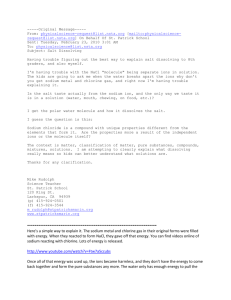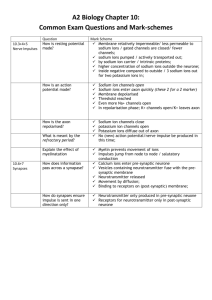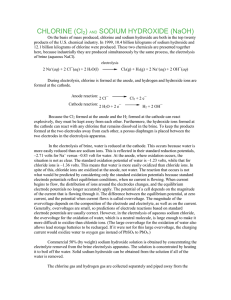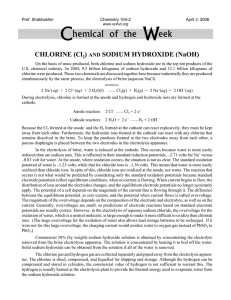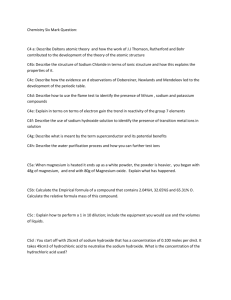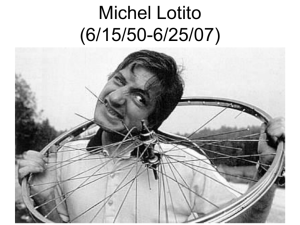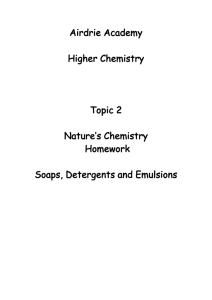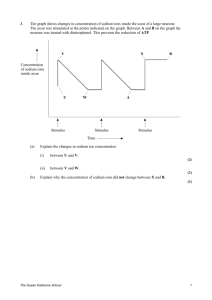Chlor-Alkali Industry: Membrane Cell Electrolysis
advertisement
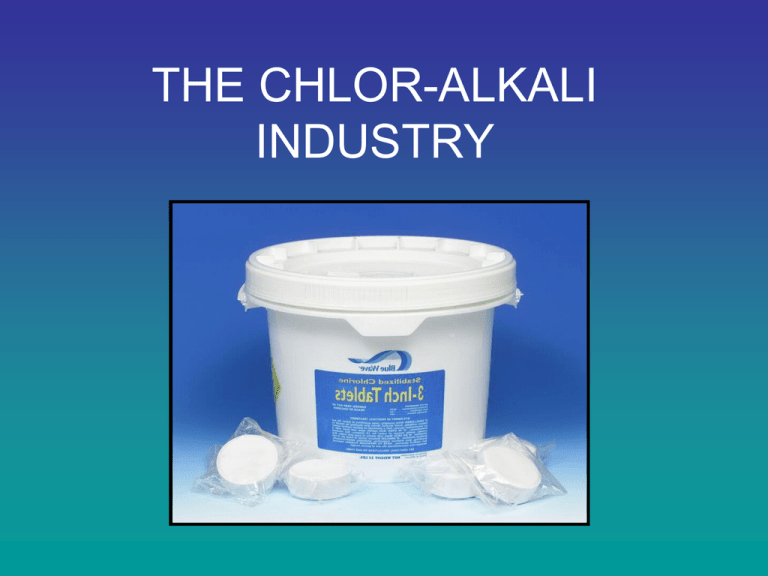
THE CHLOR-ALKALI INDUSTRY Chlorine is manufactured by the electrolysis of brine. Sodium hydroxide is produced at the same time. Three different methods are currently in use. We only need to know the method that is mainly used Membrane cell electrolysis The electrolysis cell is divided into two "rooms" by a cation permeable membrane acting as an ion exchanger. Saturated sodium (or potassium) chloride solution is passed through the anode compartment, leaving at a lower concentration. Sodium (or potassium) hydroxide solution is circulated through the cathode compartment, exiting at a higher concentration. A portion of the concentrated sodium hydroxide solution leaving the cell is diverted as product, while the remainder is diluted with deionized water and passed through the electrolyzer again. . A membrane separates the cell into two halves. The membrane only allows positive ions through. It is called a positive ion preamble membrane. Na+ ions through Cl- and OH- ion NOT go through. (must mention both negative ions in exam) The concentrated NaCl solution is pumped into the positive half-cell (anode). Cl- is oxidised to Cl2 gas that is collected as it bubbles off. The positive (Na+) sodium ions move through the membrane to the cathode half-cell. This flow completes the circuit. The water is reduced in this half-cell to form hydroxyl ions (OH-). 2H2O(l) + 2e- H2(g) + 2OH-(aq) The Na+ + OH- form a sodium hydroxide solution. The solution is removed from the half-cell. The hydrogen byproduct is used in other industrial processes. The chloralkali process is a redox reaction. The redox reaction that takes place is: 2 NaCl(aq) + 2 H2O(l) 2 NaOH(aq) + Cl2(g) + 2H+ + 2eand a further reaction takes place : 2 H+ + 2e- H2 (g) In the reatcion, the NaCl is oxidised to Cl2 and the water is reduced to H+. The uses for sodium hydroxide include: •etching aluminium ( printing a design on the metal); •removing gases like SO2 and CO2 from other industrial reactions, preventing their release into the atmosphere; •as a drain cleaner in homes (reacts with fats to form soap that can then be washed away); and •for the making of soaps and detergents. Products that are made from chlorine: •PVC •Sodium hypochlorite (NaOCl) is used as bleach in the wood pulp and paper industry, and is also used as a household bleach. •Calcium hypochlorite (Ca(OCl)2) is used in swimming pools to disinfect the swimming pools. It is often called ‘chlorine’, even though it is a compound of chlorine. •Hydrochloric acid (HCl) is a strong acid that can be used to clean metal in the iron and steel industry. It is also used to steady the pH in swimming pools. Impact on environment and humans •The factory producers hydrogen gas which is explosive and can be dangerous as can cause death and destroy property and infrastructure •The Chlorine gas may leak into the environment that can cause respiratory irritation and even death- used as mustard gas in WW2 •NaOH (caustic soda) is highly corrosive and if leaked into the groundwater- will contaminate it. Water cannot be used for irrigation ( destroy plants) or drunk ( cause health problems).

